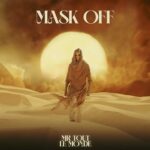Astro Boy is one of the most iconic and beloved anime characters from throughout the decades, with his early success putting the medium on the map. The titular robot's childish cuteness and whimsy exemplified what anime would become known for, but one story would turn the mighty Atom's world completely upside down.
Pluto was a 2000s manga that completely upended the story of Astro Boy, putting the boy robot in the background and focusing on a grisly murder mystery. Filled with topical social commentary and a look at the underbelly of the original series' world, Pluto took one of the brightest and cheeriest anime stories and made it feel much more real. Here's how the "dark and gritty" reboot that shouldn't have worked whatsoever somehow did.
The Story of Pluto
Pluto is essentially a retelling of the story arc "The Greatest Robot On Earth" of the original Astro Boy series, and the manga was written and drawn by Naoki Urasawa. The plot follows a robot named Gesicht who's investigating the mysterious deaths of both robots and humans. These deaths all seem to be targeted at some of the world's greatest robots, with another robot potentially being behind the murders. This causes tension among the human and robot populace of the world, as the event is the first murder of a human by a robot in years.
These events lead many to question the rights of robots, as well as whether or not they're truly alive and if those lives trump those of humans. Although it was based on one major arc from Astro Boy, Pluto lasted for six years and was comprised of eight manga volumes. Despite how simplistic the source material may have been, Urasawa created a masterpiece that was far greater than the sum of its parts.
How Pluto Subverted Astro Boy
Urasawa is most known for his dark and somewhat realistic stories such as Monster and 20th Century Boys, with Pluto pulling quite a bit from the latter's deconstructive tone. Gone is the kid-friendly whimsy and wonder of Astro Boy and his kid-friendly antics, and in its place is a much more ground-level look at his world and how everyday people would react to its events. Instead of action-adventure, it's much more a noir mystery thriller, perfectly fitting in with this more grounded take.
The art from Urasawa further evokes this, and although the characters are generally based on their original Osamu Tezuka designs, they have a far less cartoonish appearance. These more subdued and realistic character designs can be seen in Dr. Tenma and especially Astro Boy himself, who literally just looks like any other boy. This has the effect of making the more out-there events in the series seem even more significant. An obvious comparison is the 2008 Western Astro Boy CGI movie, which attempted to modernize and Americanize some of the story beats. Pluto is much more successful at this due to changing the designs and truly committing to jettisoning the kid-friendly tone.
There's also a ton of social commentary, with the series constantly asking questions involving AI and what it means to be alive. Similarly, ideas such as the then still recent War on Terror are brought up, with robots being allegories for supposed weapons of mass destruction. The series was critically lauded, as reflected by its sales of over eight million copies.
Sadly, however, the series is not nearly as remembered as it should be, likely due to many thinking that it might be a children's title. There have been rumblings over the years of live-action film and anime adaptations, but the closest thing to this has been a play version in Japan. Thankfully for Western fans, the manga has been localized in its entirety, allowing them to read a much bleaker version of the adventures of Astro Boy.
About The Author

